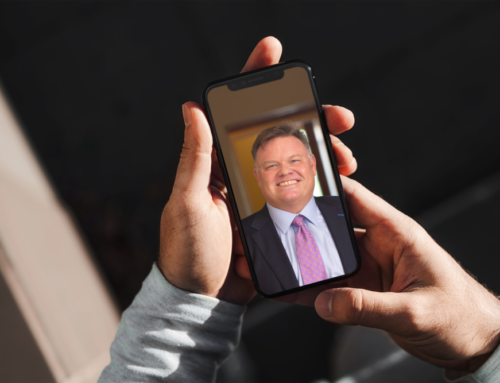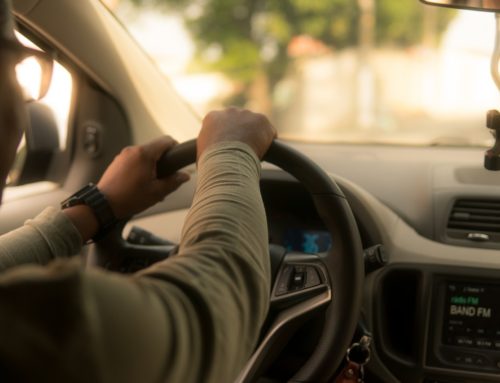Graphic Amputation Case Feature
Amputations are devastating injuries that come with several painful, but necessary, medical procedures. It is easy to underestimate the range of medical treatments needed for injuries sustained in a car accident; amputations are no exception.
In this case, our client was in the passenger seat of a car that had gotten into an accident and rolled over, and his thumb was traumatically amputated. The client had to undergo several painful procedures to treat his injury. Words are often inadequate to describe the severity of the injury and procedures associated with it.
To illustrate to the jury the treatment our client endured, we hired a medical illustrator to produce trial exhibits. To ensure that these illustrations were accurate and admissible at trial, we enlisted the help of our client’s surgeon who collaborated in producing these custom exhibits, which would also be used as visual aids to help the physician explain to the jury the procedures performed on our client.
The following medically accurate images are shown to give a realistic representation of the client’s injury and medical procedures. During the car accident, the client’s thumb was amputated at the base of his hand. Debris, like windshield glass and pebbles, was found throughout the wound (Figures 1 & 2).
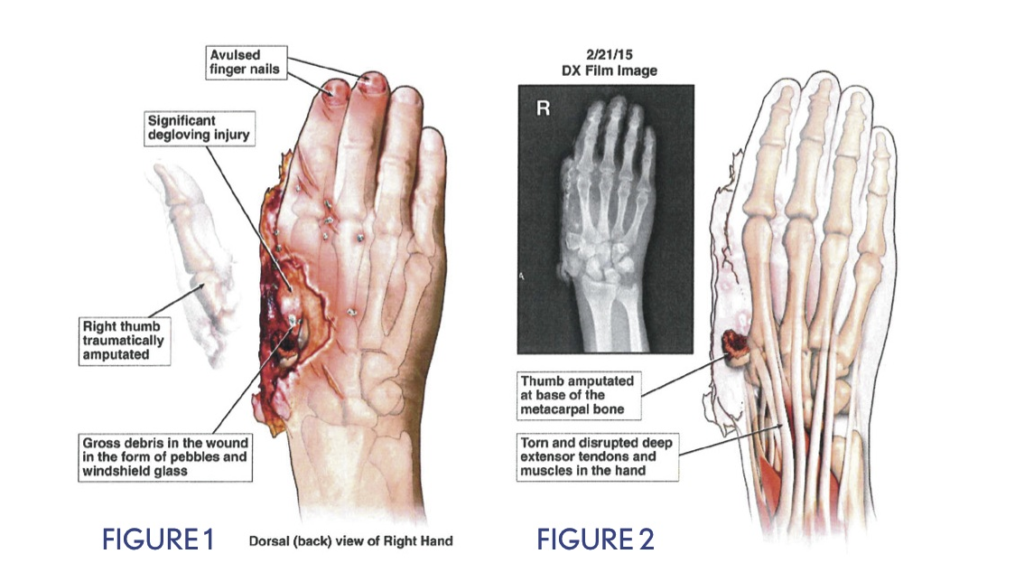
The client had to have the damaged and infected soft tissue removed and flushed out with a sterile solution (Figure 3). After the wound was treated, the doctors did a split-thickness skin graft; the removal of skin from one area to be meshed and placed over the open wound (Figure 4).
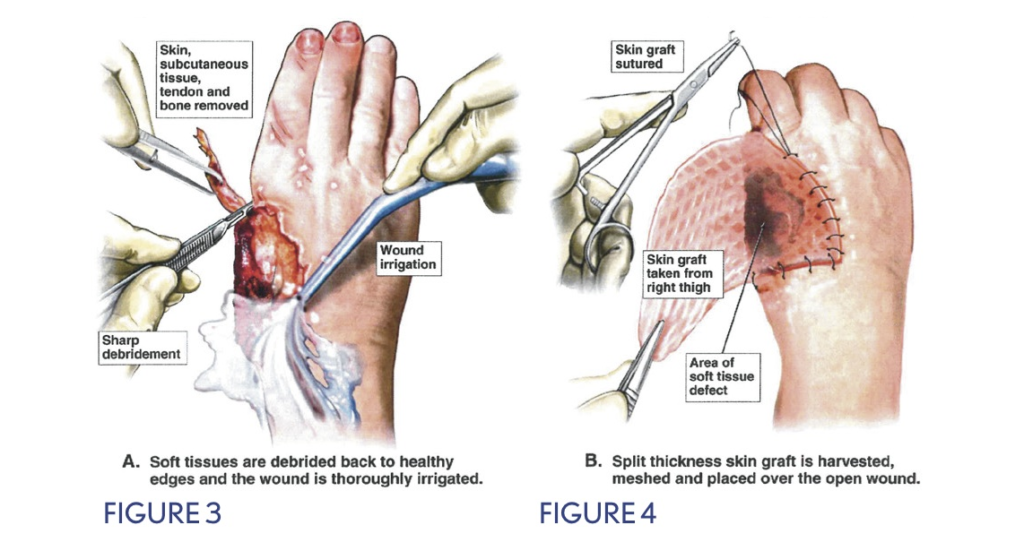
The doctors made two incisions into the client’s hand. One on the back of the hand, from the bottom of the index finger to the upper forearm. The second incision was on the palm to the side of the hand (Figure 5). The doctors then dissected into the client’s hand to expose the remaining thumb stump, nerves, and arteries (Figure 6).
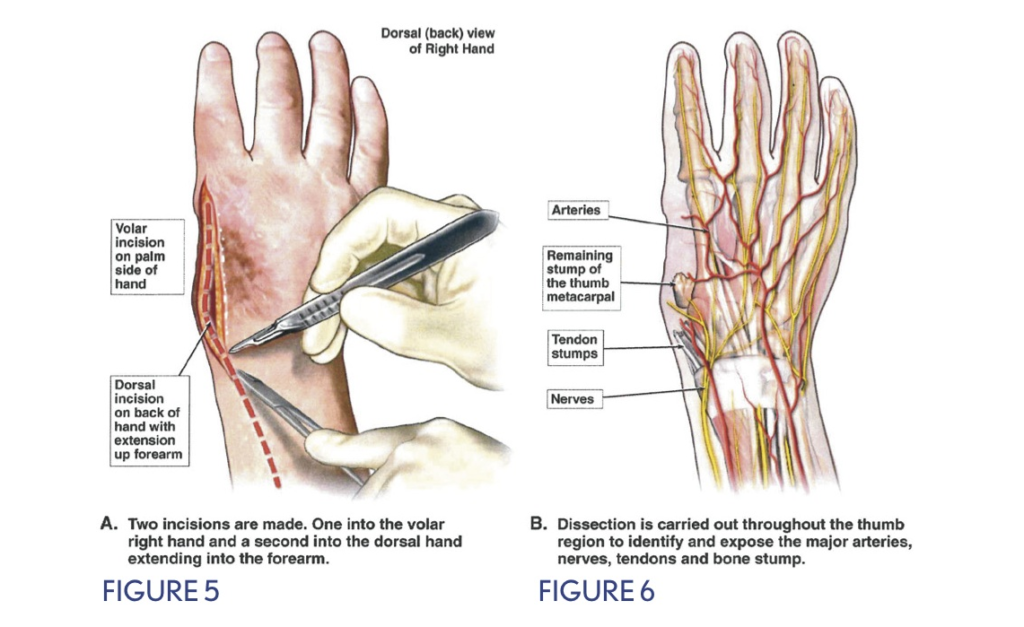
The doctors had to carefully remove the client’s second toe from their left foot to replace the missing thumb (Figure 7). The client’s toe was transferred to their right hand; the arteries, nerves, and tendons were reconnected, and the wound was closed (Figure 8).
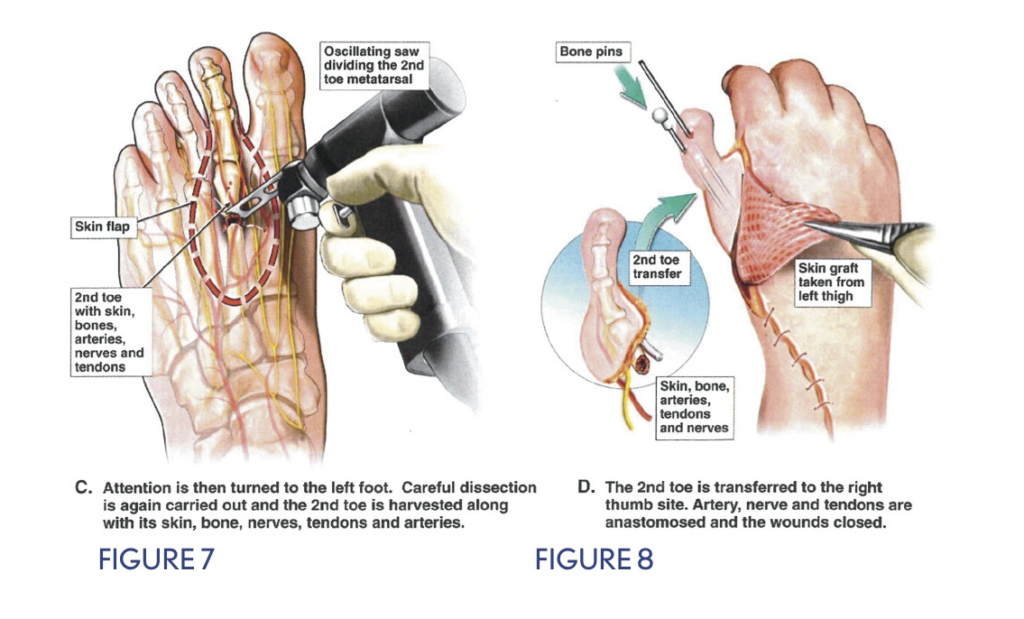
This demonstrative evidence was the primary factor in driving the insurance company to settle the case. Without this graphic evidence that showed our firm was prepared to try our client’s case, the insurance company would not have paid the full value of our client’s case. If you get into a car accident, call The Pottenger Law Firm. With more than two decades of experience, we can get you the compensation you deserve. You can reach us at 816-531-6006 or send us a message at PottengerLaw.com to arrange a free consultation.






